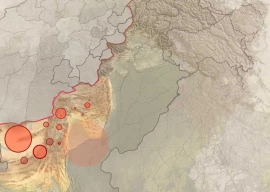
As we mark International Women’s Day today, we celebrate the progress made in improving women’s inclusion and empowerment for inspiring women like Khalida and millions of others, while seeking to better address continuing challenges, which are estimated to cost South Asian economies $888 billion, through implementing solutions that will bridge the remaining gaps. South Asian countries have seen an encouraging increase in greater access and gender parity in education. At the same time, the region has achieved substantial decreases in maternal and child mortality. As South Asian countries become more prosperous, their growth trajectory will be less assured if hundreds of millions of women remain excluded from education and employment opportunities. They will need to substantially expand their workforce in order to meet their macroeconomic growth goals and adequately support their increasingly large populations. Studies show that only around one out of four women in South Asia participate in the labour force, about half of what is typical in middle-income countries in other regions. Too many women face restrictions in decision-making, mobility, public safety; and far too many experience gender-based violence — the most egregious cases making headlines around the world.
Countries have an opportunity to invest more in health and education, as underinvestment puts a disproportionate burden on females, whose lifelong learning and productive abilities can be stymied by receiving inadequate opportunities in education. Programmes could include helping girls successfully transition from primary to secondary school, coupled with providing greater adolescent and reproductive health knowledge. More women in the workplace would help realise the potential to accelerate South Asia’s growth and development. To achieve this goal, countries should foster more conducive conditions for women to seek and grow in their employment. Measures could include improving skills training and reducing occupational segregation to open up more jobs to females; investing in the care economy to help women with their disproportionate share of household responsibilities, and overcoming barriers to women’s land and asset ownership. Other policies should seek to enhance greater access to finance by more female account holders and also ensure that rural workers receive compensation.
Increasing the share of women in local leadership positions can ensure that female’s perspectives are better taken into account in community investments and decision-making. Authorities have the responsibility to enact and implement laws that allow greater decision-making for women, such as through enforcing laws to prevent child marriage, increasing attention to the prevention and response of gender-based violence, and ensuring safe access to public transportation and spaces by, for example, providing women-only spaces on buses and trains , requiring gender-sensitivity training of all transport personnel, recruiting more women police officers, and actively addressing male gender and masculinity issues. To turn these ideas into reality, our South Asia Regional Gender Action Plan is guiding our work with the people and governments of each country in the region to help integrate sound gender practices into their economic, social, health, and education policies and programmes, based on current and proven evidence-based data and recommendations.
For South Asian countries to reach their development potential, it will require everyone—both women and men—to contribute to their full capabilities. This is the only way that South Asia will realise its promise as a part of the Asian Century.
Published in The Express Tribune, March 8th, 2017.
Like Opinion & Editorial on Facebook, follow @ETOpEd on Twitter to receive all updates on all our daily pieces.








1728386780-0/BeFunky-collage-(38)1728386780-0-270x192.webp)



COMMENTS
Comments are moderated and generally will be posted if they are on-topic and not abusive.
For more information, please see our Comments FAQ